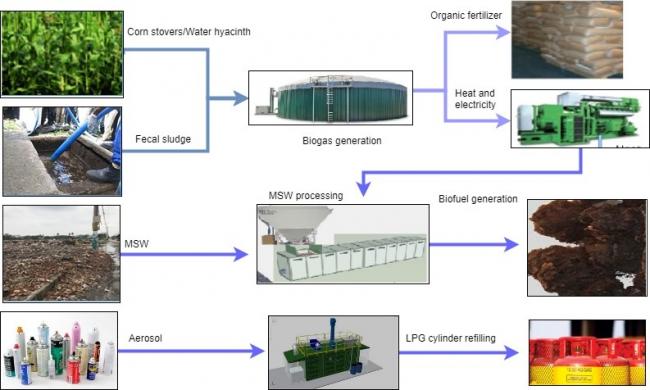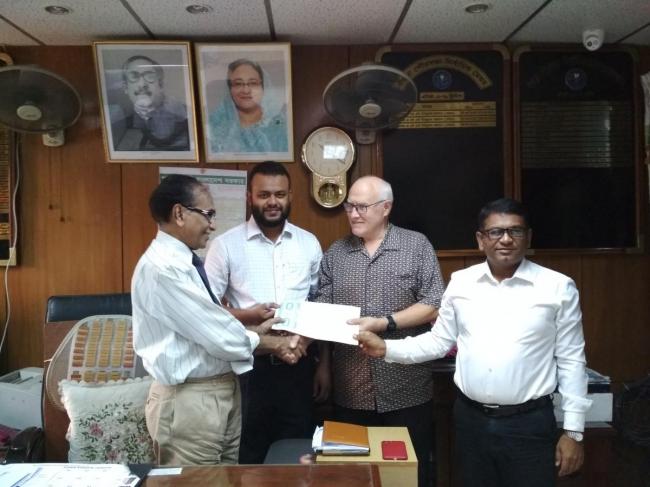On 20 September 2018 the municipality of Bogura and IRC signed a groundbreaking MoU.
Published on: 08/11/2018
The latest report of the UN's Intergovernmental Panel on Climate Change (IPCC) warns that there is only 12 years to limit global warming to a maximum of 1.5°C and avoid catastrophic environmental breakdown. So how can the sanitation sector help prevent such as a catastrophe, taking into account the added risk of methane emissions from pit latrines especially in countries such as India?
New sanitation technologies are available that not only can limit greenhouse gas emissions but also safely process municipal, agricultural and faecal waste to produce commercially viable end-products. IRC and partners have developed such an integrated waste management approach, which delivers environmental, health and economic benefits.This city-wide approach will be promoted in Bogura in Bangladesh.
It all started in 2013, when IRC coordinated an innovative research programme as part of the BRAC WASH II programme in Bangladesh. One of the research studies investigated the potential of converting a combination of human faecal waste and agricultural waste (chicken manure and corn stovers) into energy and fertiliser for the city of Bogura (pop. 780,000). Since then IRC has teamed up with the Dutch company Boessenkool, who included the treatment of municipal solid waste and aerosols. How it all fits together is illustrated in the figure below.

Memorandum of Understanding

On 20 September 2018, the Mayor of Bogura Mr. A.K.M. Mahbubor Rahman and IRC signed a groundbreaking Memorandum of Understanding (MoU). IRC is invited to facilitate private companies, finance companies and other legal entities to invest in an enterprise that will implement the proposed zero waste solution. The full MoU is available below under Downloads.
The zero waste self-financing solution will eliminate the need for landfills, reduce methane and CO2 emissions, health hazards and water pollution caused by the disposal of untreated faecal and solid wastes.
See a promotional video of the proposed technology below.